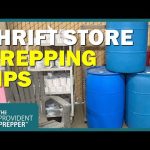Living a self-sufficient lifestyle can be a rewarding journey filled with challenges and triumphs. It allows individuals and families to connect deeply with their environment and cultivate their own resources. There are various aspects of homesteading—from gardening and animal husbandry to renewable energy solutions—that can enhance one’s life and support a sustainable future. Here’s how to embark on creating a thriving homestead, inspired by real-life experiences and practices.
One of the first steps in establishing a homestead is to cultivate a garden. This process involves choosing the right location, preparing the soil, and selecting the best plants for the climate. It’s essential to assess the sunlight and drainage in your yard to determine how to lay out the garden. Incorporating raised garden beds can not only improve drainage but also make maintenance easier. While preparing the soil, adding organic matter like compost can enhance its structure and nutrient content. When planning what to plant, consider the seasons and opt for crops that thrive together—like tomatoes and basil— to improve yield and reduce pests.
Animal husbandry is another vital component of homesteading. Raising chickens can provide a steady source of fresh eggs. When building a chicken coop, location and design are crucial. It should be well-ventilated, secure from predators, and conveniently located for easy access. A basic coop can be constructed with wooden pallets or reclaimed materials, and it should include nesting boxes, perches, and an enclosed run for the chickens to safely roam. Regular care, like feeding, watering, and cleaning the coop, ensures the health of the flock. Once established, these chickens will not only provide eggs but also contribute to the garden through their natural fertilization.
Generating your power through solar energy can significantly increase your off-grid capabilities. The installation of solar panels on a homestead can be a worthwhile investment. Begin by assessing your energy needs and researching various solar systems that best fit those needs. Understanding the sun’s path and locating panels where they get the most sunlight is essential for optimization. A basic solar power setup includes solar panels, an inverter to convert DC to AC, and batteries for energy storage. Throughout the installation process, ensure to follow local regulations and safety standards.
Beyond gardening and power solutions, maintaining a sense of community is essential in homesteading. Having neighbors who share similar goals can create a support network during challenging times. When emergencies arise, such as needing to leave for a family matter or dealing with health issues, reliable neighbors can step in. They might collect eggs or help care for the garden while one is away. Forming friendships with your community can provide morale support and practical help, allowing everyone to thrive.
As homesteading is a continuous journey, embracing changes and new projects is essential. Many experienced homesteaders continuously work on personal projects such as treehouses for children or specific garden enhancements. Keeping a list of potential improvements and projects can help maintain motivation and direction. It is also valuable to share experiences and lessons learned with others through community meetings or online platforms, which can inspire those looking to adopt a self-reliant lifestyle.
In conclusion, homesteading offers a pathway to more sustainable and autonomous living. From gardening and animal care to renewable energy and community connections, every element plays a crucial role in nurturing a self-sufficient environment. Each step forward in this journey not only enhances one’s own life but contributes positively to the surrounding community and environment. Embracing these practices opens up a world of possibilities for anyone willing to put in the effort.



GIPHY App Key not set. Please check settings